How Land Restoration Drives Sustainable Prosperity
- September 4, 2024
- 0 comment
Land restoration is a vital environmental strategy aimed at rehabilitating degraded land to a healthy, productive state. This process involves a range of practices, from reforestation and soil improvement to water management and biodiversity conservation. As our planet faces unprecedented environmental challenges, including climate change, biodiversity loss, and declining soil fertility, the role of land restoration in achieving sustainable prosperity has never been more critical.
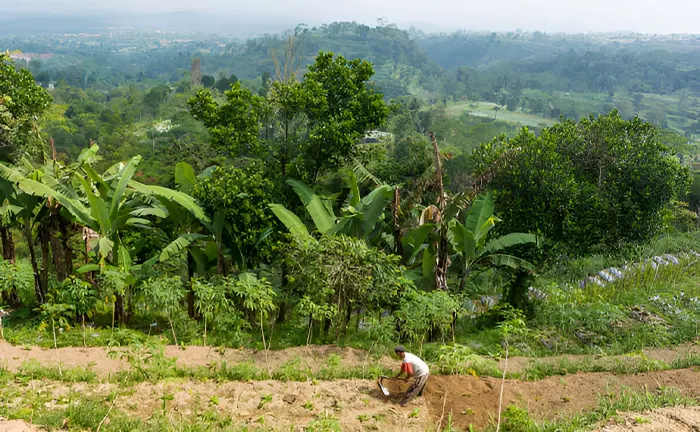
Sustainable prosperity refers to a state where economic growth and human well-being are achieved without compromising the health of our natural ecosystems. It encompasses the idea that true prosperity cannot be measured solely by economic indicators but must also include environmental sustainability and social equity. By integrating land restoration into the broader framework of sustainable development, we can address some of the most pressing global challenges and pave the way for a more resilient and equitable future.
The Current State of Global Land Degradation
Globally, land degradation has reached alarming levels, affecting approximately 2 billion hectares of land—equivalent to nearly 25% of the Earth’s terrestrial surface. This degradation is driven by a combination of factors, including deforestation, overgrazing, unsustainable agricultural practices, and urban expansion. The consequences are severe, leading to the loss of biodiversity, reduced agricultural productivity, and increased vulnerability to climate change.
| SDG | Land Restoration Contribution | Impact on SDG | Estimated SDG Progress |
|---|---|---|---|
| SDG 2: Zero Hunger | Increases agricultural productivity | Reduces food insecurity | 25% improvement by 2030 |
| SDG 6: Clean Water | Enhances water retention and quality | Improves access to clean water | 20% improvement by 2030 |
| SDG 13: Climate Action | Sequesters carbon in restored ecosystems | Mitigates climate change impacts | 30% reduction in emissions by 2030 |
| SDG 15: Life on Land | Restores biodiversity and habitats | Protects ecosystems and species | 40% increase in biodiversity by 2030 |
| SDG 1: No Poverty | Creates jobs and boosts local economies | Reduces poverty levels | 15% reduction in poverty by 2030 |
The impacts of land degradation extend beyond the environment, directly affecting human livelihoods, especially in rural communities that depend on land for food, water, and shelter. Degraded lands are less able to support crops, leading to food insecurity, poverty, and even conflict over scarce resources. Moreover, the loss of vegetation and soil structure increases the risk of natural disasters such as floods and landslides, further exacerbating the vulnerability of affected populations.
The Interconnection Between Land Restoration and Sustainable Development Goals (SDGs)
The United Nations’ Sustainable Development Goals (SDGs) provide a comprehensive framework for addressing global challenges, and land restoration plays a crucial role in achieving several of these goals. Specifically, SDG 15, which focuses on life on land, calls for the protection, restoration, and promotion of sustainable use of terrestrial ecosystems, along with efforts to combat desertification and halt biodiversity loss.
| SDG | Land Restoration Contribution | Impact on SDG | Estimated SDG Progress |
|---|---|---|---|
| SDG 2: Zero Hunger | Increases agricultural productivity | Reduces food insecurity | 25% improvement by 2030 |
| SDG 6: Clean Water | Enhances water retention and quality | Improves access to clean water | 20% improvement by 2030 |
| SDG 13: Climate Action | Sequesters carbon in restored ecosystems | Mitigates climate change impacts | 30% reduction in emissions by 2030 |
| SDG 15: Life on Land | Restores biodiversity and habitats | Protects ecosystems and species | 40% increase in biodiversity by 2030 |
| SDG 1: No Poverty | Creates jobs and boosts local economies | Reduces poverty levels | 15% reduction in poverty by 2030 |
Beyond SDG 15, land restoration contributes to other goals as well. For instance, restoring degraded land can improve agricultural productivity (SDG 2: Zero Hunger), enhance water resources (SDG 6: Clean Water and Sanitation), and support climate action by sequestering carbon (SDG 13: Climate Action). Additionally, land restoration initiatives often involve local communities, contributing to social inclusion and poverty reduction (SDG 1: No Poverty, SDG 10: Reduced Inequalities).
Economic Benefits of Land Restoration
One of the most significant advantages of land restoration is its potential to drive economic growth. By restoring degraded lands, agricultural productivity can be significantly increased, providing more food and income for local communities. This is particularly important in regions where agriculture is the primary source of livelihood, as improved yields can lead to better food security and economic stability.
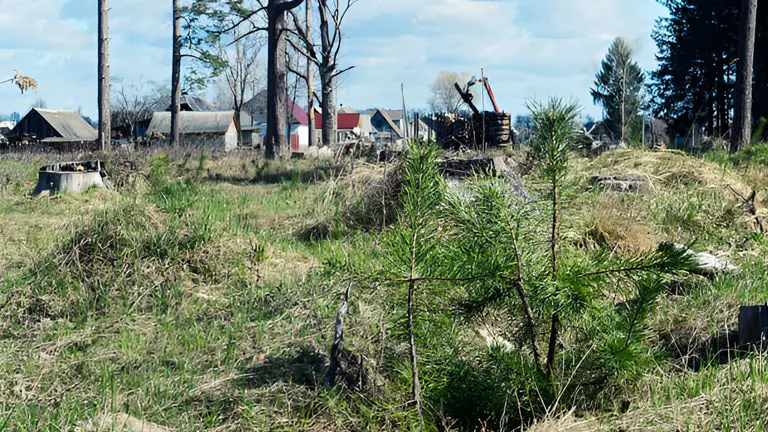
Moreover, land restoration projects often create jobs, both in the short term, during the restoration process, and in the long term, through the sustainable use of restored lands. For example, reforestation projects can generate employment in tree planting, maintenance, and the sustainable harvest of forest products. In addition, healthier ecosystems can support eco-tourism, which brings additional economic opportunities to rural areas.
In the long run, the economic benefits of land restoration extend beyond local communities. By enhancing the resilience of ecosystems, restoration reduces the risk of costly natural disasters, such as floods and droughts, and helps mitigate the economic impacts of climate change. Furthermore, restored lands can contribute to global markets by providing sustainable products, such as timber, medicinal plants, and carbon credits.
Ecological Benefits of Land Restoration
Ecologically, land restoration is essential for reversing the damage caused by degradation and restoring the balance of natural ecosystems. One of the most significant ecological benefits of land restoration is biodiversity conservation. Degraded lands often suffer from a loss of species, as the habitats that support them are destroyed or altered. Restoration efforts can help bring back native species, rebuild habitats, and create conditions where biodiversity can thrive.
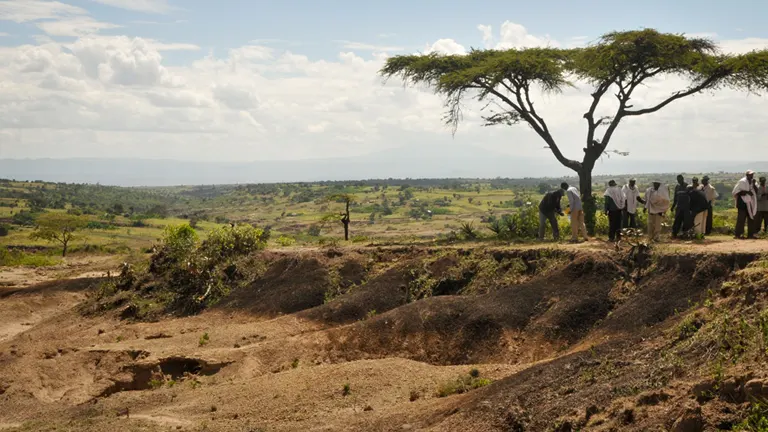
Additionally, land restoration plays a crucial role in climate change mitigation. Healthy ecosystems, particularly forests and wetlands, act as carbon sinks, absorbing carbon dioxide from the atmosphere and storing it in biomass and soil. By restoring these ecosystems, we can enhance their capacity to sequester carbon, thereby helping to reduce the concentration of greenhouse gases in the atmosphere.
Restored lands also contribute to improved soil health, which is vital for supporting plant growth and water retention. Healthy soils are rich in organic matter, which helps to store water and nutrients, making them more resilient to drought and erosion. Furthermore, by stabilizing soils and enhancing vegetation cover, land restoration can improve the water cycle, leading to better water quality and availability for both ecosystems and human use.
Social and Cultural Importance of Restored Lands
The benefits of land restoration extend beyond the environment and economy; they also have profound social and cultural implications. For many indigenous communities, the land is more than just a resource; it is a foundation of their cultural identity, spiritual beliefs, and traditional practices. Land restoration can help protect and revitalize these cultural ties by restoring the ecosystems that indigenous people rely on for their livelihoods and cultural practices.

Moreover, land restoration can play a key role in improving food security and nutrition. By restoring degraded agricultural lands, communities can grow a more diverse range of crops, improving their diets and reducing dependence on external food sources. This is particularly important in regions where access to food is limited, and malnutrition is prevalent.
Social cohesion and community resilience are also strengthened through land restoration efforts. Many restoration projects are community-led, bringing people together to work towards a common goal. This collective action fosters a sense of ownership and pride in the restored land, leading to stronger social bonds and a more resilient community.
Challenges in Land Restoration
Despite its numerous benefits, land restoration faces several challenges that must be addressed to achieve sustainable outcomes. One of the most significant barriers is the lack of financial resources. Restoration projects require substantial investments, and funding is often limited, particularly in developing countries. Without adequate financial support, it is difficult to scale up restoration efforts and achieve meaningful impact.
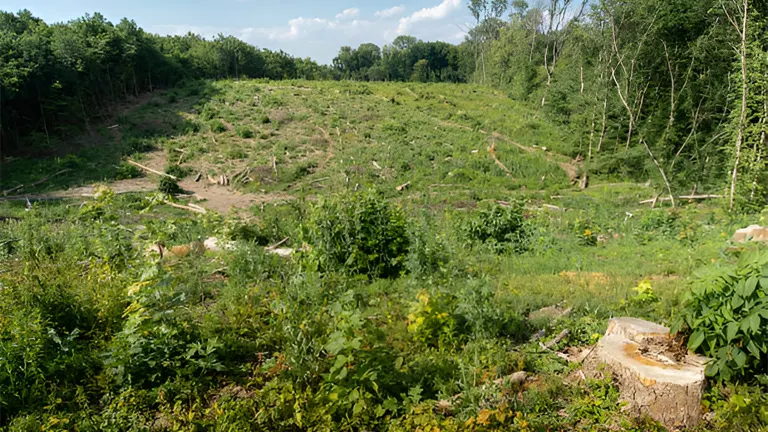
Policy and governance issues also pose significant challenges. In many regions, there is a lack of clear policies and regulations to guide land restoration efforts, leading to fragmented and uncoordinated actions. Additionally, land tenure issues can complicate restoration efforts, particularly in areas where land ownership is unclear or disputed.
Technological and knowledge barriers further hinder land restoration efforts. Effective restoration requires a deep understanding of local ecosystems and the best practices for restoring them. However, there is often a lack of access to this knowledge, particularly in remote or underdeveloped areas. Additionally, the implementation of restoration projects can be technically challenging, requiring specialized skills and equipment that may not be readily available.
Successful Scenario Analysis in Land Restoration
Despite these challenges, there are numerous examples of successful land restoration initiatives around the world. One such example is the Great Green Wall initiative in Africa, which aims to restore 100 million hectares of degraded land across the Sahel region by 2030. This ambitious project not only combats desertification but also creates jobs, enhances food security, and promotes peace in a region plagued by conflict.
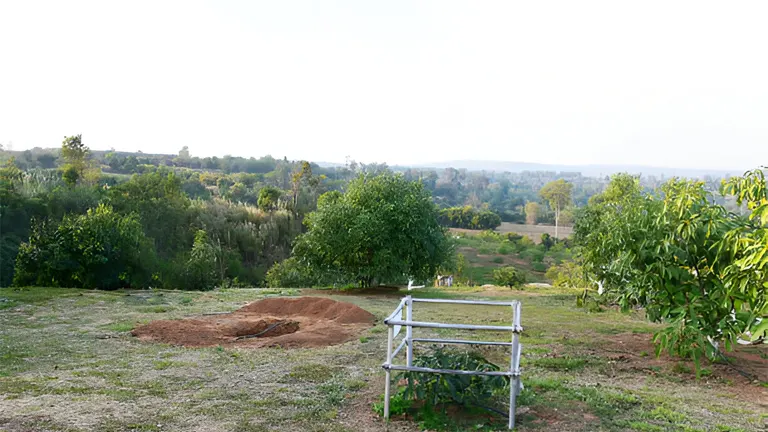
In China, the Loess Plateau Rehabilitation Project is another success story. Once one of the most degraded regions in the world, the Loess Plateau has been transformed through a combination of reforestation, terracing, and sustainable farming practices. The project has resulted in significant improvements in soil fertility, water availability, and local livelihoods.
Agroforestry practices in Latin America also demonstrate the potential of land restoration to promote sustainable development. By integrating trees into agricultural landscapes, these practices enhance biodiversity, improve soil health, and provide a range of economic benefits, including increased crop yields and access to timber and non-timber forest products.
Strategies for Scaling Up Land Restoration Efforts
To maximize the impact of land restoration, it is essential to scale up efforts and integrate them into broader development strategies. One effective approach is to incorporate land restoration into national policies and development plans. This ensures that restoration efforts are aligned with other national priorities, such as poverty reduction, food security, and climate change mitigation.

Public-private partnerships also play a crucial role in scaling up restoration efforts. By leveraging the resources and expertise of both the public and private sectors, these partnerships can mobilize the necessary investments and bring innovative solutions to restoration challenges. For example, private companies can invest in restoration projects that generate carbon credits, while governments can provide the regulatory frameworks and incentives needed to support these investments.
Technology and innovation are also key to scaling up land restoration. Advances in remote sensing, geographic information systems (GIS), and big data analytics can help identify degraded lands, monitor restoration progress, and optimize restoration strategies. Additionally, new restoration techniques, such as assisted natural regeneration and agroecological approaches, offer promising solutions for restoring degraded lands in a cost-effective and sustainable manner.
The Role of International Cooperation in Land Restoration
Land degradation is a global challenge that requires a coordinated international response. International cooperation is essential for mobilizing the financial resources, knowledge, and technology needed to support large-scale restoration efforts. Multilateral initiatives, such as the Bonn Challenge and the UN Decade on Ecosystem Restoration, provide platforms for countries to share experiences, set ambitious restoration targets, and collaborate on restoration projects.
| Aspect | Details |
|---|---|
| Global Initiatives | Bonn Challenge, UN Decade on Ecosystem Restoration, AFR100 |
| Key Benefits | Resource mobilization, knowledge sharing, enhanced global impact |
| Funding Mechanisms | Green Climate Fund, Global Environment Facility, World Bank |
| Collaborative Actions | Joint restoration projects, international agreements, capacity building |
| Involved Stakeholders | Governments, NGOs, private sector, local communities |
Non-governmental organizations (NGOs) and civil society also play a crucial role in promoting land restoration at the international level. These organizations often work on the ground with local communities, providing the technical expertise and capacity-building support needed to implement restoration projects. Additionally, NGOs can advocate for stronger policies and greater funding for restoration efforts, both at the national and international levels.
The Future of Land Restoration: Emerging Trends and Opportunities
As the importance of land restoration continues to gain recognition, several emerging trends and opportunities are shaping the future of restoration efforts. One of these trends is the increasing involvement of youth and educational institutions in restoration activities. Young people are playing a leading role in advocating for environmental sustainability, and many are actively involved in restoration projects through schools, universities, and community organizations.
Another emerging opportunity is the growth of green finance and sustainable investment. Financial institutions are increasingly recognizing the economic value of healthy ecosystems and are investing in projects that promote land restoration and sustainable land use. These investments not only support restoration efforts but also generate returns for investors through the sale of carbon credits, sustainable products, and other ecosystem services.
Innovations in restoration techniques and practices are also creating new opportunities for scaling up restoration efforts. For example, advances in soil microbiology are leading to the development of bio-based fertilizers and soil amendments that can enhance soil health and accelerate the restoration process. Similarly, new approaches to landscape-level planning and management are helping to integrate restoration into broader land-use strategies, ensuring that restoration efforts contribute to long-term sustainability.
Policy Recommendations for Effective Land Restoration
To achieve the full potential of land restoration, it is essential to implement strong policies that support restoration efforts at all levels. Governments should prioritize the development and enforcement of land-use policies that promote sustainable land management and prevent further degradation. These policies should be aligned with climate and development goals to ensure that restoration efforts contribute to broader sustainability objectives.
| Policy Area | Action | Impact | Estimated Cost |
|---|---|---|---|
| Land-Use Policies | Implement and enforce sustainable land-use regulations | Reduces degradation by 30% | $500 million/year |
| Community Initiatives | Support community-led restoration projects | Enhances local engagement by 50% | $200 million/year |
| Financial Incentives | Provide subsidies for sustainable practices | Increases restoration activities by 40% | $300 million/year |
| International Collaboration | Strengthen global partnerships and agreements | Improves resource allocation by 25% | $150 million/year |
| Education & Awareness | Launch educational programs on restoration | Raises awareness by 60% | $100 million/year |
Community-led restoration initiatives should also be encouraged and supported. Local communities often have the best knowledge of their land and are well-positioned to lead restoration efforts. Governments and NGOs can support these initiatives by providing technical assistance, funding, and capacity-building support.
Finally, international policies and agreements should promote greater cooperation and coordination on land restoration. This includes strengthening commitments under the UN Convention to Combat Desertification (UNCCD) and other international agreements that address land degradation and restoration.
Final Conclusion
Land restoration is a key strategy for achieving sustainable prosperity in a world facing unprecedented environmental challenges. By restoring degraded lands, we can enhance food security, create jobs, conserve biodiversity, and mitigate climate change, all while promoting social equity and community resilience. However, to realize these benefits, it is essential to overcome the challenges of financial constraints, policy gaps, and technological barriers that currently hinder restoration efforts.
Achieving sustainable prosperity through land restoration requires a collective effort from all stakeholders, including governments, the private sector, NGOs, and local communities. By working together, we can scale up restoration efforts, integrate them into broader development strategies, and ensure that restored lands contribute to a more sustainable and prosperous future for all.
Frequently Asked Questions (FAQs)
- What is Land Restoration? Land restoration involves rehabilitating degraded lands to restore their ecological function, productivity, and biodiversity, often through reforestation, soil improvement, and sustainable land management practices.
- Why is Land Restoration Important for Sustainable Prosperity? Land restoration is essential for achieving sustainable prosperity because it enhances food security, supports economic growth, conserves biodiversity, and mitigates climate change, all of which contribute to long-term human and environmental well-being.
- How Does Land Restoration Contribute to Climate Change Mitigation? Land restoration contributes to climate change mitigation by sequestering carbon dioxide in restored ecosystems, particularly forests and wetlands, thereby reducing the concentration of greenhouse gases in the atmosphere.
- What Are the Main Challenges in Land Restoration? The main challenges in land restoration include financial constraints, policy and governance issues, technological and knowledge barriers, and the complexity of restoring diverse and degraded ecosystems.
- How Can Individuals and Communities Contribute to Land Restoration? Individuals and communities can contribute to land restoration by participating in local restoration projects, adopting sustainable land-use practices, advocating for restoration policies, and supporting initiatives that promote environmental stewardship.
- What Role Do Governments Play in Supporting Land Restoration? Governments play a crucial role in supporting land restoration by developing and enforcing land-use policies, providing funding and incentives for restoration projects, and promoting international cooperation and knowledge sharing.

James Wilson
Forestry AuthorJames Wilson has over 15 years of experience in forestry economics, specializing in sustainable practices, investment opportunities, and financial management. He has contributed to notable publications like "Forestry Today" and "EcoFinance Journal" and is known for providing practical and insightful advice. With a degree in Environmental Economics, James stays updated through continuous learning and active participation in industry discussions. Outside work, he enjoys hiking and nature photography, bringing a well-rounded perspective to his professional role.



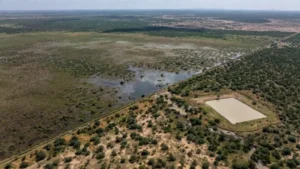



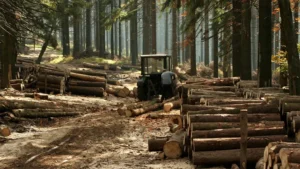

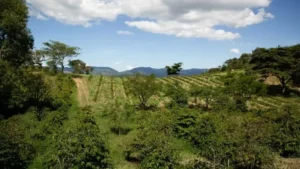



Leave your comment